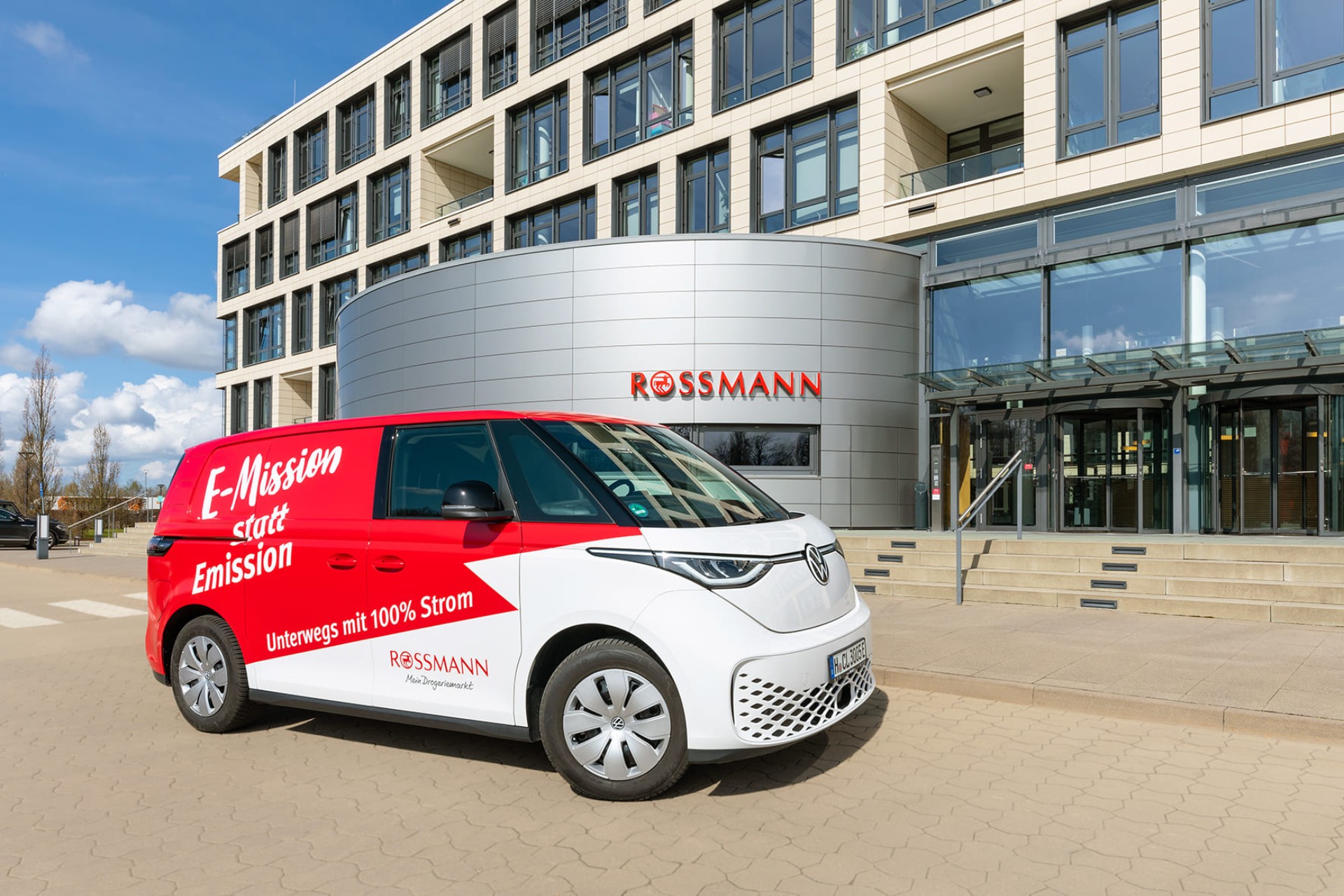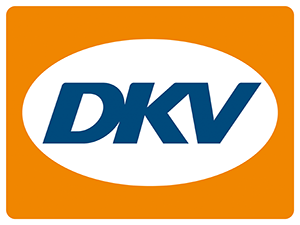How the introduction of electromobility succeeds

Many companies are currently switching to electromobility. This is a major decision that is not only groundbreaking in terms of sustainable mobility, but also with a view to the future of their own company. With the right preparation, the changeover is not as big as you might think. Read the interview with Jaro Stracke, Head of Fleet Management at Rossmann, to find out how the introduction has been a success, what tips he can pass on, and why Rossmann already has an e-truck in its fleet today.
Newsroom: Hello Mr. Stracke, thank you for taking the time to give us an insight into the switch to electric mobility at Rossmann. Let's start with a very simple question: what does a fleet management department manager do at Rossmann?
Jaro Stracke: Thank you very much for the invitation. As a department head in fleet management, I am responsible for Rossmann's vehicle fleet. A few years ago, we switched to a completely purchased fleet, so one of my main tasks is to hold discussions with the vehicle manufacturers. I'm particularly concerned with the questions of delivery times and which future models are best suited to our needs.
Together with my team, we also cover the day-to-day business of our drivers. This is exactly as you might imagine: we take care of repair approvals, conditions with garages, and answer all questions about the vehicles or clarify them with our - primarily - European manufacturers.
Newsroom: How large is the Rossmann fleet that your team looks after?
Jaro Stracke: Our fleet comprises around 840 cars and over 140 trucks, which we look after with a total of 8 people in fleet management.
Newsroom: You have already mentioned the future models. When did you decide to switch to electric mobility?
Jaro Stracke: When I started at Rossmann 3 years ago, our fleet was purely based on combustion engines. Then, 2 years ago, we decided to offer electromobility as well. Even though that was a relatively early point in time. It quickly became clear to us that we would rather experience electromobility ourselves and not ask others. That way, we can make our own experiences and also share tips with others.
" It quickly became clear to us that we would rather experience electromobility ourselves and not ask others."
Newsroom: Were there any other reasons for making the switch?
Jaro Stracke: In general, the issue of sustainability is very important to Rossmann. That doesn't just refer to the fleet's drive system, but to the entire product cycle. We really want to get down to business and therefore focus very strongly on sustainability, from purchasing to packaging materials. That's why the switch to more sustainable drives is the logical consequence, because of course logistics is also part of the product cycle.
For me, it was very important to get well informed. And if the press, manufacturers and politicians are to be trusted, electromobility is the drive of the future. That's why we wanted to gain our own experience early on and learn how electromobility works in practice. That way, we'll be prepared if there's no way around electromobility in the future.
That is also the reason why we recently added an electric truck to our fleet. We can't use it in normal day-to-day operations yet, but we can already gather our own experience and see firsthand whether electromobility also works for trucks.
Newsroom: And does it work?
Jaro Stracke: The beginning was difficult, of course we had long delivery times. The range is not yet what we need for everyday use, so we only use the truck for short distances.
But the first impressions of the drivers are very good. They like driving our e-truck because the usability is great.
Newsroom: Rossmann already relied on DKV Mobility as a mobility partner before the switch. How did the switch work out?
Jaro Stracke: Exactly, we already handled our fueling business via DKV Mobility beforehand. That's why the switch was very easy. Of course, a few adjustments are always necessary, but that was clear to us. When it comes to using the card, however, there are no differences in everyday use compared to the normal fuel card.
Newsroom: How does the DKV card help you in everyday life?
Jaro Stracke: My job in fleet management is made easier by DKV Mobility. The most important thing for me is the good monitoring. I have an overview of everything and can always access it from anywhere. Where is there incorrect usage? What is the average consumption? That makes my day-to-day life a lot easier.
To be honest, drivers don't care what's on the map. The main thing is that the card works at as many fuel stations and car washes as possible. It's also important that the fuel cards have a long shelf life, so you don't have to change them so often. In all these respects, DKV Mobility has proven to be very reliable for us so far.
Newsroom: So, the shift to e-mobility has worked. You have established electric vehicles in your fleet. What is the current status?
Jaro Stracke: At the beginning, we offered 20 electric vehicles and were prepared for a big rush. However, of these 20 cars, only 12 cars have been requested. We quickly realised that some of our drivers were still very skeptical. The main concerns were the range and safety of the vehicles.
So, our first challenge was to allay the drivers' fears. But after the first wave of skepticism, it became clear: there's no need to be afraid of electromobility. In the end, it's just a company car, like any other.
But we didn't want to exert pressure. It quickly became clear that this was the right way to go. It was important to us that the drivers accept the electric vehicles and do not just tolerate them.
"After the first wave of skepticism, however, it became clear: there's no need to be afraid of electric mobility. In the end, it's just a company car, like any other."
Newsroom: Were there certain incentives that were created or how were the drivers convinced?
Jaro Stracke: In the end, our approach was exactly the right one: we let the drivers make their own experiences. They then shared these experiences with their colleagues, and gradually more people became interested in having an electric car. So, you could say that the internal exchange has increased acceptance tremendously. We didn't want to force anyone, but rather let the electric cars speak for themselves.
That's why, after the first wave of new cars, we gave our drivers the option of choosing between a combustion engine and an electric car in each vehicle class. Last year, 25% of our new cars were electric. In total, 15% of our drivers already chose electric vehicles.
Newsroom: Those are great figures. Was overcoming the initial skepticism the biggest challenge?
Jaro Stracke: Yes, you could say that.
Newsroom: How were you able to overcome this challenge?
Jaro Stracke: The key for us was the wallbox at home. Everyone who wants to drive electrically must have the option of installing a wallbox at home. That's important because it's the ability to charge at home that increases our flexibility enormously. We have even decided that our employees should ideally charge at home, because this also makes sense from an economic point of view.
Installing a wallbox at home was also a big argument for increasing the acceptance of electromobility internally. Of course, our drivers also use the public charging network, but if you charge up every evening, you can drive off with a fully charged battery in the morning - for most colleagues, that's usually enough for the whole day.
Newsroom: It seems that electromobility has been successfully implemented in your fleet. What do you see as the biggest advantage of electric driving?
Jaro Stracke: Of course, as a fleet manager, the economic advantages immediately come to mind here. Taxation is a big advantage, but subsidies are also interesting for us companies, of course.
Otherwise, I would say that the biggest advantage is that the changes are not too big. Electromobility is simply a different drive. But in the end, you get a completely normal car. The only technological advantage is already on the side of electric vehicles. Manufacturers are already focusing strongly on electric vehicles. So, if you're looking for the latest technology in your car, you're well advised to go with electric vehicles.
For us as a company, the effect of sustainability is extremely important, because we know that with electric vehicles, we are helping to shape a sustainable future.
Newsroom: You describe electromobility as the way of the future? Would you switch to a combustion engine again?
Jaro Stracke: My company car is electric, so I drive electric for both business and pleasure. I see no reason to wish for my combustion engine back. I know that electromobility works in my everyday life and I enjoy using the convenience of modern technology that my e-car offers me.
Newsroom: We are slowly coming to the end of the interview. So, here's another question for someone who has successfully made the switch: what advice would you give to someone who is planning to switch to e-mobility for professional reasons?
Jaro Stracke: As a fleet manager, I can say that I only had to make minor adjustments in my day-to-day work. The process remains the same. It is important to approach the topic in a structured way. The first question you should ask yourself: where can the cars be charged? That's why the first thing we did was to set up a charging infrastructure at the site and then at the employees' homes. Once that was done, it was much the same as buying a car with a combustion engine. We didn't have any transition problems. In the meantime, everyone has become more professional. The manufacturer and partners know what's going on and can answer questions quickly.
From a driver's point of view, the most important tip is certainly to get involved in electromobility. It's always best to experience things yourself. I have got into the habit of charging my car every day. That way, I start every morning with a full car. So, from my point of view, I can take away the fear of an electric car. But the best tip is quite obvious: just sit in it and try it out for yourself!
"But the best tip is quite obvious: just sit in it and try it out for yourself!"
Newsroom: That's a great tip! Finally, we would like to ask: what thoughts on electromobility would you like to get off your chest?
Jaro Stracke: I would say what I currently say to every manufacturer: you have to agree and position yourselves promptly on the subject of funding. Profitability is a bit of a back burner for companies right now. I also notice this when I talk to colleagues. You get the feeling that the positive development of electromobility is stalling a bit. If electromobility is not to be slowed down, something has to happen now. Economic efficiency and sustainability must remain compatible. Both for companies and for private users.
From a private perspective, I ask myself: what about subsidies? How long are the delivery times? I think that security must be created, because for most people an electric car is a major investment that needs to be well thought out. I really like driving electric and hope that safety can be provided accordingly.
Newsroom: Thank you very much for your frank comments. We thank you for the interview and are pleased to be able to share such an honest insight with other interested parties.
Jaro Stracke: With pleasure. I'm glad if I can help with my experience!
